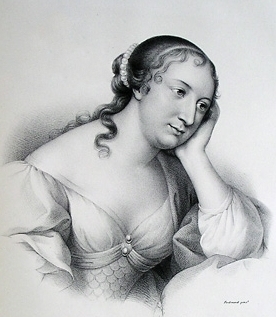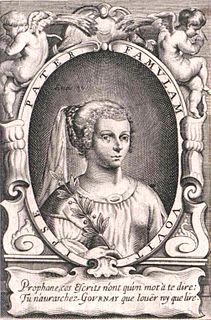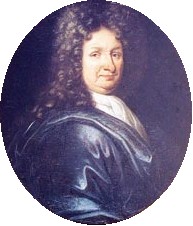 W
WMarie-Catherine Le Jumel de Barneville, Baroness d'Aulnoy, also known as Countess d'Aulnoy, was a French writer known for her literary fairy tales. When she termed her works contes de fées, she originated the term that is now generally used for the genre.
 W
WCatherine Bernard was a French poet, playwright, and novelist. She composed three historical novels, two verse tragedies, several poems, and was awarded several poetry prizes by the Académie française. Bernard established the fundamental aesthetic principle of the French literary conte de fées popular in the salons of the late seventeenth century with the dictum: "the [adventures] should always be implausible and the emotions always natural". Her works are appreciated today for their psychological nuance.
 W
WEdmé Boursault was a French dramatist and miscellaneous writer, born at Mussy l'Evéque, now Mussy-sur-Seine (Aube).
 W
WJean-Pierre Camus de Pontcarré was a French bishop, preacher, and author of works of fiction and spirituality.
 W
WSavinien de Cyrano de Bergerac was a French novelist, playwright, epistolarian and duelist.
 W
WJean Desmarets, Sieur de Saint-Sorlin was a French writer and dramatist. He was a founding member, and the first to occupy seat 4 of the Académie française in 1634.
 W
WMarie-Madeleine Pioche de La Vergne, comtesse de La Fayette, better known as Madame de La Fayette, was a French writer; she authored La Princesse de Clèves, France's first historical novel and one of the earliest novels in literature.
 W
WFrançois de Salignac de la Mothe-Fénelon, more commonly known as François Fénelon, was a French Roman Catholic archbishop, theologian, poet and writer. He today is remembered mostly as the author of The Adventures of Telemachus, first published in 1699.
 W
WAntoine Furetière, was a French scholar, writer, and lexicographer.
 W
WMarie de Gournay was a French writer, who wrote a novel and a number of other literary compositions, including The Equality of Men and Women and The Ladies' Grievance. She insisted that women should be educated. Gournay was also an editor and commentator of Michel de Montaigne. After Montaigne's death, Gournay edited and published his Essays.
 W
WGabriel-Joseph de Lavergne, comte de Guilleragues (1628–1684), was a French politician of the 17th century.
 W
WJean de La Fontaine was a French fabulist and one of the most widely read French poets of the 17th century. He is known above all for his Fables, which provided a model for subsequent fabulists across Europe and numerous alternative versions in France, as well as in French regional languages.
 W
WFrançois l'Hermite was a French dramatist who wrote under the name Tristan l'Hermite. He was born at the Château de Soliers in the Haute Marche.
 W
WJean Regnault de Segrais was a French poet and novelist born in Caen. He was elected a member of the Académie française in 1662.
 W
WPaul Scarron was a French poet, dramatist, and novelist, born in Paris. Though his precise birth date is unknown, he was baptized on 4 July 1610. Scarron was the first husband of Françoise d'Aubigné, who later became Madame de Maintenon and secretly married King Louis XIV of France.
 W
WGeorges de Scudéry, the elder brother of Madeleine de Scudéry, was a French novelist, dramatist and poet.
 W
WMadeleine de Scudéry, often known simply as Mademoiselle de Scudéry, was a French writer.
 W
WCharles Sorel, sieur de Souvigny was a French novelist and general writer.
 W
WHonoré d'Urfé, marquis de Valromey, comte de Châteauneuf was a French novelist and miscellaneous writer.
 W
WDenis Vairasse d' Allais was a French writer born around 1630 and died in 1672.
 W
WThéophile de Viau was a French Baroque poet and dramatist.
 W
WMarie-Catherine de Villedieu, born Marie-Catherine Desjardins and generally referred to as Madame de Villedieu was a French writer of plays, novels and short fiction. Largely forgotten or eclipsed by other writers of the period in the works of literary historians of the 19th and 20th centuries, Madame de Villedieu is currently enjoying a literary revival.